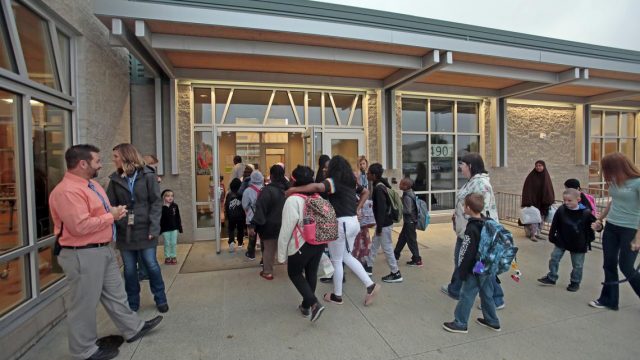Report: North Dakota Leading the Nation in Growing School Spending and It’s Not Even Close

Education is important, and because it’s important, we spend a lot of time debating education. And the bulk of that debate is how much we ought to be spending on education.
If you follow political debates long enough, you begin to learn there are certain assumptions made about education budgets. Because they’re for the children, the assumption is that schools are always underfunded, teachers are underpaid, and that schools will always do better with more money.
The truth is actually complicated. Some lavishly funded school districts don’t outperform those with more modest means when it comes to student outcomes. As for teachers, it depends on where you’re talking about. Here in North Dakota rural school districts struggle to attract teachers – they sometimes have to pay a premium to lure in good applicants – while more populous areas often have far more applicants than they have positions available which suggests their compensation levels are attractive.
This stuff is complicated. But to the extent that statewide financial figures are helpful, it’s worth noting that North Dakota has been leading the nation in growing per-pupil funding for K-12 schools according to the Center on Budget and Policy Priorities which released a report on the subject back in March.
You can read the full report below, but here’s a chart illustrating what I’m talking about:

This is due to changes in how the state funnels money to the school districts (the “executive budget” column is what Governor Doug Burgum asked from lawmakers for K-12 funding, not what they actually appropriated):


Keep in mind that these increases have been taking place even as the state has seen a consistent rise in enrollment over the last decade. In fact, enrollment growth has been happening at a rate almost double that of teacher hiring, which is probably not a great trend:

So where does North Dakota end up in per-pupil spending compared to other states? The CBPP does a comparison, adjusting the numbers for things like inflation and cost of living, and finds that North Dakota is near the middle of the pack:

What good is a big K-12 budget if the students aren’t doing well? Why spend more when current budget levels are producing adequate outcomes?
[scribd id=414357688 key=key-OFMgicKFSeNpkWAonqVv mode=scroll]




